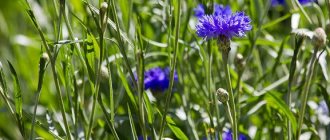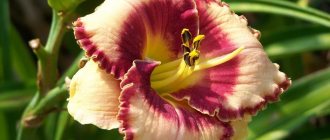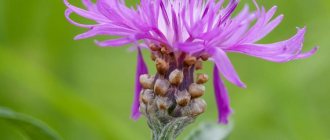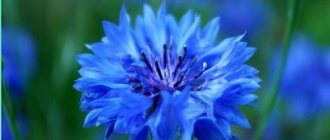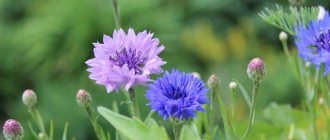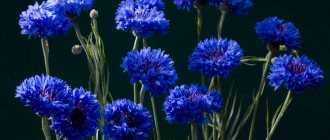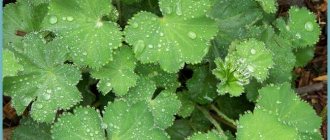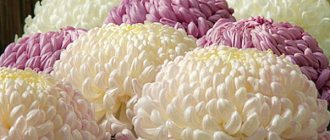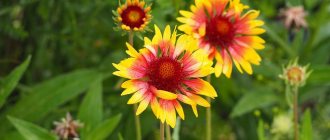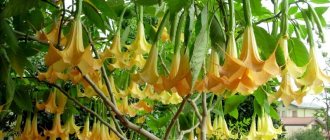Cornflower is a herbaceous perennial, biennial or annual plant. Distinguished by its beauty. Very popular among gardeners. The stem is of two types: recumbent and erect. The height reaches a meter. Leaves also come in two types: full and dissected. The inflorescences are baskets of different shapes. There are several types of flowers: funnel-shaped flowers, located at the edge, and tube-shaped flowers, located in the middle. The color scheme is very diverse: flowers are white, yellow, crimson, orange, red, blue, purple and many others.
Bathonic description of garden cornflowers and the birthplace of their growth
The cornflower's habitat is all over Europe. Often found among crops. One of the types of cornflower, namely cornflower (also called blue cornflower), is found throughout Europe as a weed. Its location is especially common in winter grains. To get rid of it, the soil is covered with lime, the beds are also well weeded and the seeds of the desired crops are thoroughly cleaned. In some European countries, cornflower is almost the most harmful and difficult to remove weed. But in addition to the negative qualities of some species, cornflower also has advantages, the main one of which is its beauty. Thanks to her, he is popular among flower sellers and gardeners around the world.
Did you know how to plant ageratum flowers?
All about caring for nepenthes plants at home.
Types of garden perennial cornflowers
The genus of cornflowers has about five hundred species, which differ from each other primarily in external parameters, as well as in life expectancy (annual, biennial, perennial).
The most common types of perennial cornflowers are:
- White cornflower. A plant reaching up to 30 centimeters in height, the flowers are double to the touch, the color is white. They are collected in small baskets with diameters of about five centimeters. This species is listed in the Red Book due to its rarity.
Photo. White cornflower
- Mountain cornflower. The most popular of the perennial species is the representative of cornflowers. The stem of the plant reaches a meter in height, the rhizomes are very powerful, covering a large area.
Photo. Mountain cornflower
- Yellow cornflower. A bush that holds its shape well. It grows up to a meter high, which gives a good view of its bright yellow flowers, the diameter of which does not exceed five centimeters.
- Large-headed cornflower. A bush reaching 120 centimeters in height. The flowers have a diameter of up to 8 centimeters, which makes them the largest among all representatives of the cornflower genus.
Photo. Large-headed cornflower
- Eastern cornflower. A wild plant whose height ranges from one to twenty meters. The leaves are divided and whole, the color is bright yellow. Flowers are collected in inflorescences.
Photo. Eastern cornflower
- Meadow cornflower. Herbaceous plant. The height of the stem is 80 centimeters. The leaves are lanceolate or ovate, located at two levels: lower and upper. The lower leaves are on winged petioles, and the upper ones are closer to the flowers. The flowers are located in baskets, the color is lilac-pink. This type of cornflower is more common in Eurasia. In Europe he is poorly known.
Photo. Meadow cornflower
- Whitened cornflower. It has an erect stem reaching a height of half a meter. It is one of the most popular species due to its beauty. The flowers are bright pink, up to five centimeters in diameter. It blooms in summer, from late July to late August.
Photo. Whitened cornflower
- Pink cornflower. The erect and strong stem reaches a height of one meter. The inflorescences are strongly swollen. The inflorescences are solitary, up to five centimeters in diameter. The leaves are lanceolate, the color is dark green. Blooms in June and July.
PERENNIAL CORNFLOWER
“Annual blue cornflower” PHOTO: www.floweredem.uol.ua
Cornflower is an unpretentious and very stable perennial herbaceous plant. But there are Annual and Biennial species. The stems are straight, in some species they are creeping. The height of many species is more than 1 m, but there are also smaller ones. The leaves are green or bluish-gray, often dissected. Inflorescences are baskets. The shape of the baskets varies from completely round to cone-shaped.
PHOTO: www.flower-onego
PHOTO: Sedova A
One of the most difficult tasks of a gardener is creating beautiful flower beds for different areas of the garden. To get acquainted with the author’s ready-made ideas for creating them and photographs of the colors used, we suggest watching this video course!
The most popular types of Cornflower:
I. ANNUAL CORNFLOWERS
ANNUAL BLUE CORNFLOWER:
An annual herbaceous plant that is now becoming less and less common in nature. Previously it was considered as a weed of rye crops. Now it’s time to spread it again - it has become so rare in the wild. And although the word Cornflower brings up an association specifically with a blue flower, in nature white and lilac, pink, lilac, and even yellow flower colors are very common. The leaves of Cornflower Annual have a slightly grayish tint. Flowering lasts from mid-summer to autumn. For more details, see the article: “Annual Cornflower”
“Perennial large-headed cornflower” PHOTO: www.flower-onego PHOTO: EDSR.
Growing Cornflower Annual - planting and care:
Location:
Preferably sunny.
The soil:
This is a fairly unpretentious plant; it loves calcareous, moist, fertile soils.
Reproduction:
Seeds through seedlings for early flowering, but we must remember that they do not tolerate transplantation well, so it is better to sow immediately in the garden.
II. PERENNIAL TYPES OF CORNFORNOWS
These are large plants with the same large inflorescences and thick stems. Perennial cornflowers are undemanding, reproduce easily, and practically do not get sick. The most effective:
KROSSGAMIA LARGE-HEADED CENTRANT OR GROSSGEIMIA LARGE-HEADED:
With large yellow heads. From a thick and short rhizome, erect shoots up to 1.2 m high, covered with oblong-lanceolate leaves, extend. The baskets are single, bright yellow, large, up to 5 cm in d, capitate. The bush holds its shape well and does not fall apart. Blooms in mid-summer. Propagated by sowing in the ground or dividing bushes in spring or autumn. It is necessary to divide the bushes every few years. It is not picky about soils, but prefers deep, well-moistened, fertile and clayey soils.
PHOTO: www.chelsad.ru
PHOTO: Pryanikova O.V.
WHITENED CORNFLOWER
One of the most common, unpretentious, and yet very beautiful is Vasilkov. It has showy fluffy hot pink flowers but also gorgeous blue-gray leaves. The stems are straight, strong, branched, up to 70 cm high, covered with sessile silvery leaves. The baskets are located at the ends of the stems, they are single up to 5 cm in d. Flowering is abundant. The entire bush forms a silver-colored sphere. Drought resistant. Frost-resistant, consistently decorative. Its bush can grow without dividing or replanting for more than 10 years. Propagated by sowing seeds and dividing the bush in spring.
“The cornflower has many faces. Whitened" PHOTO: www.chelsad.ru PHOTO: Pryanikova O.V.
RUSSIAN Cornflower
A typical steppe plant. Tall, up to 1.4 m, perennial with deep-rooted taproot and straight, few bare stems. The inflorescence is light yellow, large up to 7 cm in d. Grows well in sunny areas with well-drained alkaline, fertile soils. Frost-resistant and drought-resistant perennial. Reproduces only by seeds. The bush does not tolerate division well. Gives self-seeding.
PHOTO: www.flower-onego
PHOTO: EDSR
4. Mountain Cornflower - Erect stems up to 60 cm high. Inflorescence - blue-violet basket up to 6 cm in d. There are varieties with large flowers - "Grandiflora", some with white - "Alba", with pink - "Rosea", with dark purple - "Violetta". Cornflower Mountain prefers well-lit areas with fertile, preferably alkaline, drained, moisture-absorbing soils. Almost never gets sick. Reproduction: by seed - with sowing before winter, or dividing the bush - in early spring or late summer. Grows in one place for up to 10 years.
FISCHER'S Cornflower:
Stems are simple, erect, 40–60 cm in height, heavily pubescent, lanceolate leaves. Inflorescences are large, up to 10 cm in d. The color of the inflorescences is varied - all shades of purple, pink or white. In cultivation, Fisher's cornflower grows quickly, forming an openwork curtain. Flowering is long lasting. Fischer's cornflower prefers well-lit areas with loose, moisture-absorbing fertile soils. Frost resistance is high. There are no diseases or pests. Propagated by dividing rhizomes in early spring or late summer. Seed propagation is used less frequently.
Growing Perennial Cornflowers - planting and care:
Location:
Sunny.
The soil:
Fertile, loose, neutral in acidity. Cornflower Mountain prefers alkaline soils, otherwise it gets fusarium. They can't stand being soaked.
All Perennial Cornflowers are unpretentious long-livers. They grow without dividing or transplanting for more than 10 years.
|
|
|
Care:
Timely weeding of young plantings, loosening, and watering in hot weather. There are very few diseases in Cornflowers, occasionally fungal diseases in very wet years.
Winter hardiness:
The listed species are frost-resistant and drought-resistant.
Reproduction:
For each type - see above. Seeds of Perennial Cornflowers can be sown before winter - in October or early spring - in April directly into the garden in place.
Usage:
Decorating a garden in a natural style.
- < Back
- Forward >
When and how to plant garden perennial cornflowers
It is recommended to plant the plant in the spring. You need to let the soil warm up so as not to freeze the plant. Most often planted between mid-April and late May. Cornflower is unpretentious to soil quality; you can plant it in any soil except clay, but be sure to loosen the soil before planting. Root sections are planted with a bud, and root shoots with rhizomes and seedlings. Since the rhizomes of the plant are developed, they should be planted at a distance so that the plants can calmly coexist without trying to “fight” for territory and mineral resources.
When planting, the roots should be spread in different directions, the bud should be at the same level as the ground line. If you are planting a type of cornflower with roots growing horizontally, then you should lower the bud a little underground, literally a few centimeters.
Growing perennial cornflowers
Grow cornflowers where there is enough space
Plants are grown outdoors, in open ground, in a place that is well lit by sunlight. Basil loves freedom, so growing it in pots at home is strictly not recommended. The distance between flowers should be at least 30 centimeters. Otherwise, the seedlings will simply prevent sunlight from reaching each other, and there will also be a sharp lack of minerals.
The best soil for growing cornflowers is fertile. Any vegetable or garden soil will do. But the soil must be rich in humus and minerals. Some varieties of cornflowers (annual and biennial) are adapted to alkaline soils.
Rules of care
One of the most unpretentious plants can be seen everywhere: in fields, meadows, forest edges, and also in garden beds. The website flowery-blog.ru will tell you what you need to know to prolong flowering and get spectacular bushes.
Cornflower planting
Cornflower is a light- and sun-loving flower. It can grow in open space, exposing its bright “tops” to the sun’s rays, but in partial shade it will not reveal all its beauty. Therefore, when choosing a place for planting, give preference only to sunny areas.
Most species require fertile, humus-rich, loose soil with good drainage. Before planting, it is advisable to dilute heavy soil with sand, vermiculite, or loose peat, and flavor it with organic matter or mineral mixtures. When propagated by seeds, sowing is done in the spring directly into open ground, on prepared, already warmed, carefully dug and abundantly watered areas of soil. Cornflower seeds are small enough that they do not need to be buried. Seedlings sprout on 7-10 days. Seeds can overwinter in the soil, so winter planting is often practiced, sowing them in the ground in November. To obtain early flowering specimens, the seedling method is used, sowing them in pots as early as March, and then planting the resulting strong seedlings in a permanent place at the end of May.
✿
Caring for cornflowers
Most types of cornflowers require minimal care, which boils down to watering, removing weeds and digging up the top layer of soil. It is recommended to remove flowers that have wilted, if you, of course, want to maintain the beautiful appearance of your plants. Cornflowers grown for cutting should be fertilized once every two weeks. Buy complex fertilizers from a specialized store and feed the plants with them. Pests practically do not spoil cornflowers; only occasionally a spider mite can spoil the leaves. In this case, they should be cut off to prevent further infection of the plant.
[adsp-pro-5]
Methods for propagating garden cornflowers
Cornflowers reproduce by dividing the bush, cuttings and seeds
Perennial cornflowers reproduce using root cuttings, dividing the bush and seeds. There are three ways to reproduce. Seeds should be sown in spring. After grazing, the beds must be thinned out heavily. The distance between the bushes should not be less than 30 centimeters. After flowering, the cornflower begins uncontrolled self-seeding.
Planting and replanting should be done in late summer or early autumn. The bush that you want to transplant should be dug up, cleared of soil and its rhizomes placed in water for a while. The shoots need to be shortened. For transplantation to be successful, the plot must have three or more buds. The delenka should be planted in the required place, and the upper part of the plant should not exceed a height of ten centimeters. Watering should be done moderately, several times a week. It will take a year for the plant to take root, after which the plant will immediately begin to bloom profusely.
Cornflower plant
It can often be found in the flower beds of the city and in the front gardens of our flower lovers. Let's study the structure of cornflower from the point of view of a flower master
Description
It has a straight stem, which, depending on the variety, can reach a height of 100 cm. The flowers are collected in dense baskets of various shades :
- White;
- Blue;
- Yellow;
- Purple.
Cornflower is a beautiful, simple flower that does not require special care.
Plants can be :
- Annuals.
- Two years old.
- Perennial.
Flowering begins in early summer and, depending on the variety, until late autumn.
Which group/family does it belong to?
Belongs to the Asteraceae family , also this family is called Compositae.
Application in various fields
Since the petals of the flower have a delicate and pleasant aroma, it is used in various fields:
- Used as a seasoning for meat dishes.
- The petals are put into aromatic teas .
- In medicine .
Medicinal properties
Cornflower contains a wide range of minerals, vitamins, flavnoids and coumarins.
With the help of this plant you can treat various diseases :
- Chronic diseases of the upper respiratory tract.
- Urinary system.
- Liver diseases.
- Gallbladder.
- Treatment of edema.
Diseases, plant pests and methods of combating them
Perennial cornflower is very resistant to parasites and infections. It is only susceptible to attack by mites and fungi. Fusarium is the most common fungal disease of cornflowers. Its signs are primarily foliage diseases: they instantly turn yellow and may even fall off. To eliminate the disease, damaged leaves should be cut off, and the places on the trunk where these leaves were should be treated with a special product. For example, “Benomil” is suitable, which can be bought at an affordable price in any specialized plant care store.
Houseplant polyscias and everything about caring for it at home. We recommend that you get acquainted with the interesting flowering Christmas tree Chamelacium.
On hot summer days, cornflowers can become infected with spider mites. You can determine this by looking at the leaves: spots of different sizes and colors should appear on them, and the leaves themselves should turn yellow. Affected leaves should be immediately cut off and thrown away, and the bushes should be sprayed and thoroughly wiped with water mixed with soap. Do this twice a day until the plant is cured.
Watch the video about cornflower flowers, in it you will learn some more useful information, we wish you pleasant viewing.
Useful properties of cornflower
Traditional healers use only flowers located at the edge of the basket. These flowers contain:
- flavonoids;
- bitter glycoses;
- carotene;
- ascorbic acid;
- coloring matter.
They begin to stock up on flowers when they are completely in bloom and only by hand, so as not to pick off the flowers located inside. Since they are not used in treatment and preparation of various medicines. And sometimes they even worsen the healing properties of the prepared medicine.
The inflorescences should be dried by spreading them out in a thin layer in the shade, since the sun's rays can spoil the quality of the prepared products. After drying, the flowers are kept in complete darkness. These flowers, even after drying, do not lose their color and have a bitter taste.
Cornflower blue application
Usually either tea from the petals or various decoctions consisting of extreme flowers are used. All this is used for bladder problems, spasms, and dropsy.
This plant has proven itself well as a choleretic remedy for infirmities of the bile ducts. The extract of this flower increases appetite and consequently improves digestion.
It is also the main component of decoctions that cure diseases such as:
- nervous system disorders;
- headache;
- skin irritation;
- helps with fever.
Flower tincture
Blue cornflower tincture is not difficult to prepare. Pour 1 teaspoon of dried flowers into 200 g. boiling water and let it brew for 20 minutes. Take this tincture 50 g. 30 minutes before meals.
Rinse to increase hair growth
To do this, take a tablespoon of inflorescences and pour 200 grams. boiling water adding 200 grams immediately to the tincture. vinegar. When everything has cooled down, use it to rinse your hair. Doing this operation twice a week for a month greatly increases hair growth.
When treating the urinary system
Take three portions of cornflower and angelica rhizomes, add four parts of juniper fruits. Add 200 grams per tablespoon of the mixture. boiling water Leave for 20 minutes and take 50 grams orally 3 times a day. Store the tincture only in the refrigerator and for no more than two days.
Decoction for washing the inflamed cornea of the eye
One teaspoon of the flower is mixed with one teaspoon of eyebright and poured into 200 grams. boiling water Boil for three minutes over low heat, let it brew for 20 minutes, strain well through cotton wool or gauze folded in six layers. Instill this infusion 4 times a day.
Diuretic tea recipe
To prepare this tea, take equal parts of herbs: cornflowers, licorice, bearberry. Brew everything with boiling water and let it brew for an hour.
Contraindications
The flower is dangerous only for those people who have individual intolerance. The plant itself is considered mildly poisonous. These beautiful flowers are contraindicated:
- pregnant women;
- nursing mothers;
- children.
All infusions made from this plant increase uterine bleeding. And you cannot take medicinal herbs without a doctor’s prescription.
Using cornflower in cooking
The flowers and seeds of the plant are used in cooking. They are used in the preparation of first courses, various sauces and gravies. It is also added to various black tea blends.
Cornflower in cosmetology
Since this plant has anti-inflammatory properties, lotions are made from it to care for normal and oily skin. These tinctures also have a mattifying effect and a calming effect.
Extracts and extracts from the flower are added to shampoos and after using this shampoo, hair growth is activated, having a calming effect on the scalp.
Tincture against hair loss
The dried flowers are steamed with enough boiling water and allowed to brew for about half an hour. Then filter and use daily for 30 days.
Where and in what areas are perennial cornflowers used?
But not only gardeners love this crop. Cornflowers are used in a number of other areas:
- Medicine: classical and folk. In classical medicine, cornflowers are used to treat diseases of the eyes, liver and bile ducts. Used as part of an antiseptic to disinfect wounds and fractures. In folk medicine, infusions are made from cornflowers, which are used as a diuretic. Also, tinctures of certain types of cornflower help with coughs and other colds, as well as for the prevention of ARVI.
- Gynecology. A decoction of cornflower brings the menstrual cycle back to normal.
- Cosmetology. The decoction can help relieve some temporary skin problems such as eye bags, enlarged skin pores and allergic reactions.
Application of Cornflower:
The cornflower flower is used in cooking. Its leaves have a delicate aroma and are often used as a seasoning for dishes.
Medicine has not been spared cornflowers either. This flower has diuretic properties. Therefore, cornflower decoctions are used for kidney diseases, edema, etc. Cornflower decoctions also have choleretic properties. It is also used for liver diseases, including jaundice. Cornflower also has antipyretic, diaphoretic and bactericidal properties.
The flower is often used in cosmetics. Cornflower is also in demand as a decorative flower. Cornflower is also mentioned as a dye for Easter eggs. But in our time, when food dyes are available, it is unlikely that people will run into the field for cornflowers.
